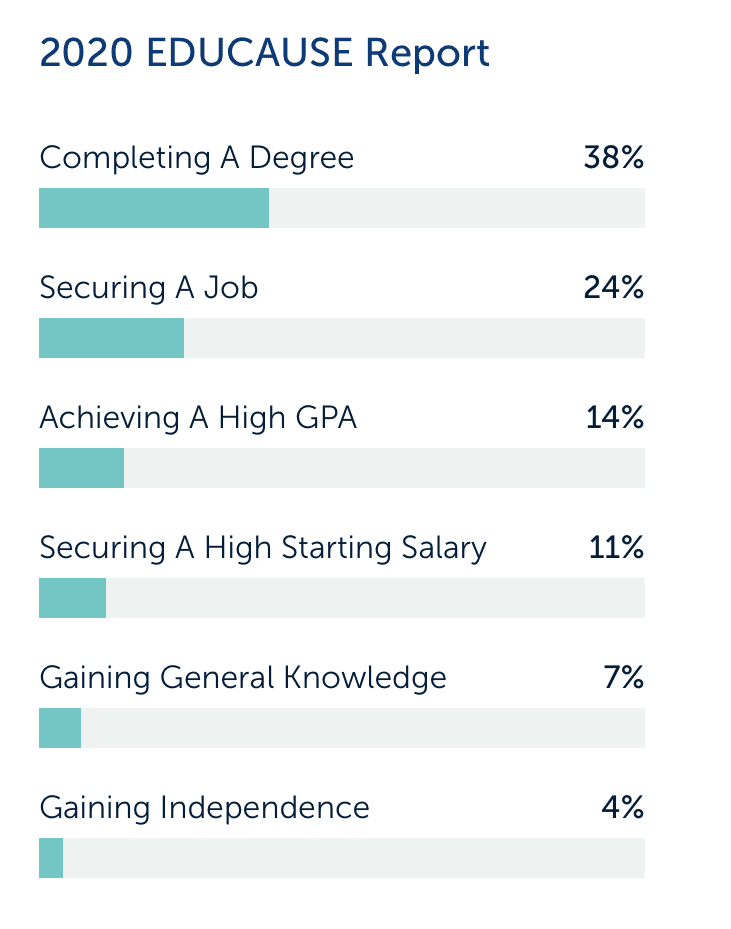It’s about innovation, not disruption: why digital transformation looks different for higher ed
In higher education, innovation is everywhere. From classrooms to laboratories to business incubators, ideation and disruption are in the veins of academic life. Yet in the broader trend of digital transformation, most industry-agnostic onlookers would put higher ed institutions at the bottom of the innovator heap. That’s because, despite widespread innovation on the outskirts of education, we haven’t yet seen the scale of business model disruption that digital transformation evangelists point out in consumer industries.
While disruptive players certainly exist—and often shape the direction of institutions’ adaptation, like MOOCs—the biggest shifts for higher education will come from within. To drive this evolution, or self-disruption, higher ed leaders need to understand the trajectory of digital upstarts like Netflix, Uber, and Airbnb—both where their models overlap and where they differ from higher ed’s mandate for change. In this post, I’ll outline some of the consumer trends relevant to higher ed, discuss the industry’s unique challenges, and introduce a framework to help your campus build stamina for continuous innovation.
Traditional college students arrive fresh from high school, bright-eyed, bushy-tailed, and engaged in the latest technology trends. As the first generation of true digital natives, incoming classes are now fully immersed in the information economy as they embark on their degrees. Gen Z, as they are known, are notoriously mobile-first, with 97% owning smartphones—and almost two thirds feeling more insecure without their mobile phone than their wallet. For these learners, seamless, digitally-enabled consumer experiences are table stakes in the wider world, and they bring these expectations onto campus.
But with the demographic cliff looming after a decade of steadily declining enrollments, institutions are grasping for new pathways to prosperity. Add in the vast swathes of workers hit by the COVID-19 economic downturn (almost 26 million in the United States), and the need for “non-traditional” and adult student support has never been more pressing. The learner lifecycle now spans from high school dual-enrollment and associate’s programs through to employer placement, graduate re-enrollment, and upskilling through a fast-changing career. For these students, educational experiences must mesh seamlessly with—and complement—the chaos and complexity of modern life.
Due to these shifting needs and lengthening engagements, supporting student learning and academic discovery is increasingly an enterprise that spans decades of engagement with a single individual. As the digital age marches on, the kinds of individuals seeking out further education will continue to diversify—and institutions are tasked with architecting personalized, 21st century experiences for every single one.
Learn How Institutions Can Evolve Their Strategies to Be More Responsive To Student Needs
-
57%
of Gen Z reported feeling more insecure without their mobile phone than their wallet
New solutions will be unique to higher ed
Confronting the mandate to personalize and simplify the student experience is no simple task. To skim the literature of “digital transformation” is to encounter industry titans like Netflix, Uber, and Airbnb. These are all digitally enabled businesses in which technology and innovation go hand in hand. Cloud technologies allow them to quickly build bespoke tools and workflows that are ruthlessly aligned to customer needs, all with an eye on a single metric: profit. When things don’t pan out, they quickly fall apart; when they do, the model scales. When it comes to these disruptors, you’ve never heard of them until they’re everywhere you look.
But for higher education, the same alignment around a singular focus has been difficult to attain. In the first place, our students’ measures of success are increasingly diverse. They’re not looking for a film to watch or trying to make it to the airport on time. They’re looking for something fundamentally amorphous: an education. And even among “traditional” students, a recent EDUCAUSE report shows that success in education is relative: just over one third see the completion of a degree as the primary measure of success. Employment prospects, academic attainment, and personal growth together account for 62% of students’ main objectives in attending college.

When customers have complex goals, expectations, and experiences, aligning technology and purpose is a complicated endeavor. For higher education, in addition to complex student goals and expectations, the complexity of our organizations themselves creates a barrier to following the consumer industry’s innovation playbook. One CIO likened the challenge to solving a Rubik’s cube:
Higher education is essentially three businesses in one: quasi-governmental administration, teaching and learning, and research. From a technology perspective, it’s like a Rubik’s Cube; you can easily align for one of those priorities, but it’s difficult to get all three sides the same color.
CIO
Canadian Research University
Institutional leaders are faced with the challenge of coordinating much-needed innovation in multiple directions simultaneously. To navigate this path, strong and unifying leadership attuned to the central missions of higher education is paramount, but a strong technology strategy will also be integral to institutions’ sustainability and success.
Promises and pitfalls in the road ahead
For most campuses, the pandemic itself was a jolt toward a more digitally enabled future. IT organizations, student services groups, and faculty and staff all jumped into action to shift offerings online and reimagine the interactions, boundaries, and touchpoints between students and their institutions. But as we begin to emerge on the other side of this global reset, how can we keep up the momentum on innovation? The answer will involve iteration based on trial and error—a practice far less formalized in higher education’s administrative arm.
If success in the digital economy means aligning technology capabilities to the most valuable components of the customer (or student) experience, higher education has further investments on the horizon, and these digital investments must be made strategically. Spending millions of dollars and multiple years to re-implement the status quo in massive system migrations may seem appealing, but it isn’t advancing the institution’s ability to compete—and it’s likely to sap the institution’s energy to innovate on other fronts.
Instead, innovative, student-centric services must be delivered in new ways, leveraging new tools. And they must be deployed with the expectation of change. The need to dismantle, reconfigure, and reimagine solutions as students and their needs shift in the decade ahead should be a top concern as campuses consider their path forward. In the words of one Chief of Staff interviewed by EAB, “We need to build with Lego blocks, not pour concrete on situations.”
More Blogs

How can you tame data sprawl? Consider a chief data officer

How to lead change when the change requires buying a new technology
